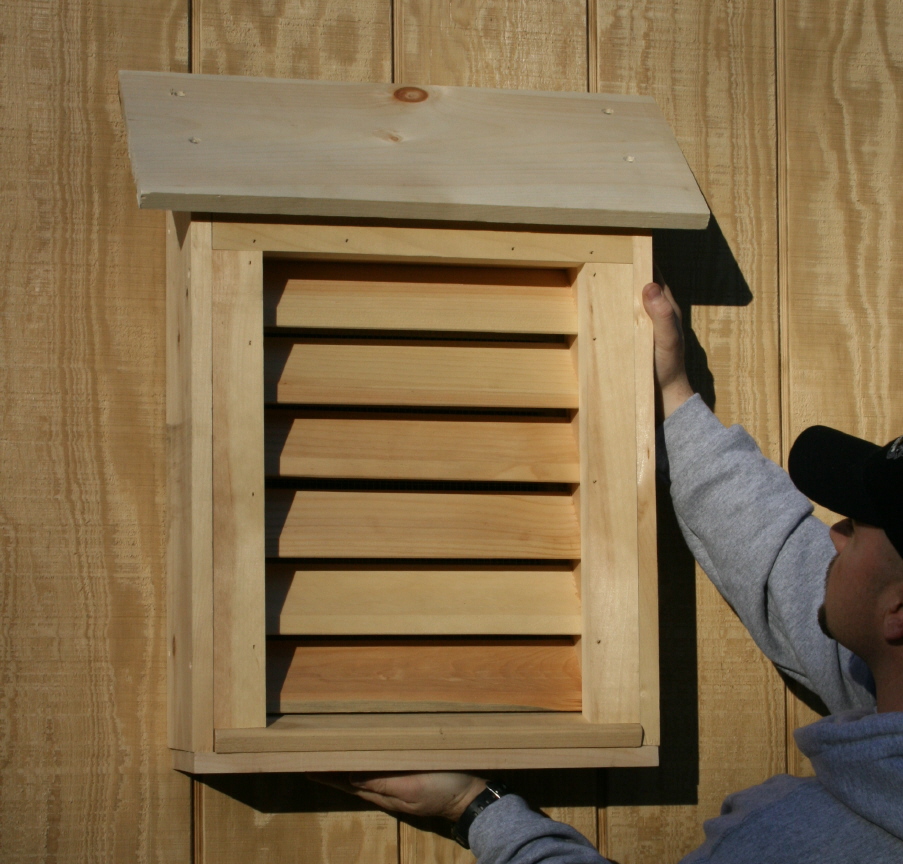The bat's food's habitat is also getting destroyed which means the bats cannot eat. Most bats eat insects such as beetles, moths and mosquitoes. But the insects they eat will not live without their homes so destroying the insects homes hurts the bats.
Some organizations such as Bat Conservation International (BCI) are trying to help bats with their problems. They do this by building bat houses with kids and selling bat houses so everyone can have one. A bat house is a wooden structure made for bats to roost in. Another organization trying to help bats is the Organization for Bat Conservation who's directer, Rob Mies, helped bat by going to the Museum of Natural History and giving a talk about bats and how they help us. This helps to raise awareness about bats problems and show people that bats are good, helpful creatures. There is also a group of biologists who are turning and abandoned military bunker in Maine into a bat house. This is useful because then something that is not being used by people helps bats.
You can help bats by putting up bat houses, building bat gardens and telling your friends and family that bat are good and need help with habitat loss problems. A bat garden is a garden in which you should plant night flowers and scented plants and a pond for the bats to drink out of. You should also plant flower that attract bats and their prey such as Agave, which will attract some species of bats.
( Brown/common long eared bats. Photo from http://home.kpn.nl/korst105/bhforum/longearedbats1.jpg.
(Bat house photo. Image from http://www.batguys.com/resources/images/sbinsfull.JPG.)
Sources: http://www.defenders.org/bats/threats
Post by Liel


